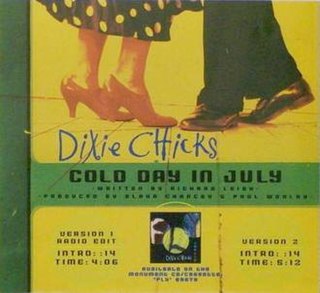| "The Sycamore Tree" | ||||
|---|---|---|---|---|
| Single by Paul Brandt | ||||
| from the album That's the Truth | ||||
| Released | 2000 | |||
| Genre | Country | |||
| Length | 5:19 | |||
| Label | Reprise | |||
| Songwriter(s) | Paul Brandt Steve Rosen | |||
| Producer(s) | Chris Farren | |||
| Paul Brandt singles chronology | ||||
| ||||
"The Sycamore Tree" is a song recorded by Canadian country music artist Paul Brandt. It was released in 2000 as the fourth single from his third studio album, That's the Truth . It peaked at number 7 on the RPM Country Tracks chart in April 2000.
Country music, also known as country and western, and hillbilly music, is a genre of popular music that originated in the southern United States in the early 1920s. It takes its roots from genres such as American folk music and blues.

Paul Rennée Belobersycky is a Canadian country music artist, known professionally as Paul Brandt. Growing up in Calgary, he was a pediatric RN at the time of his big break. In 1996, he made his mark on the country music charts with the single "My Heart Has a History," propelling him to international success and making him the first male Canadian country singer to reach the Top 10 of the Billboard Hot Country Songs chart in the United States since Hank Snow in 1974.

That's the Truth is the third studio album by Canadian country music singer Paul Brandt. The album has been certified Gold by the CRIA. Four singles — "That's the Truth", "It's a Beautiful Thing", "That Hurts", and "The Sycamore Tree" — were released from the album, all but "That Hurts" charted on the Canadian RPM Country Tracks charts, where they reached numbers 1, 13, and 7, respectively. In addition, only "It's a Beautiful Thing" charted in the Top 40 in the U.S.



